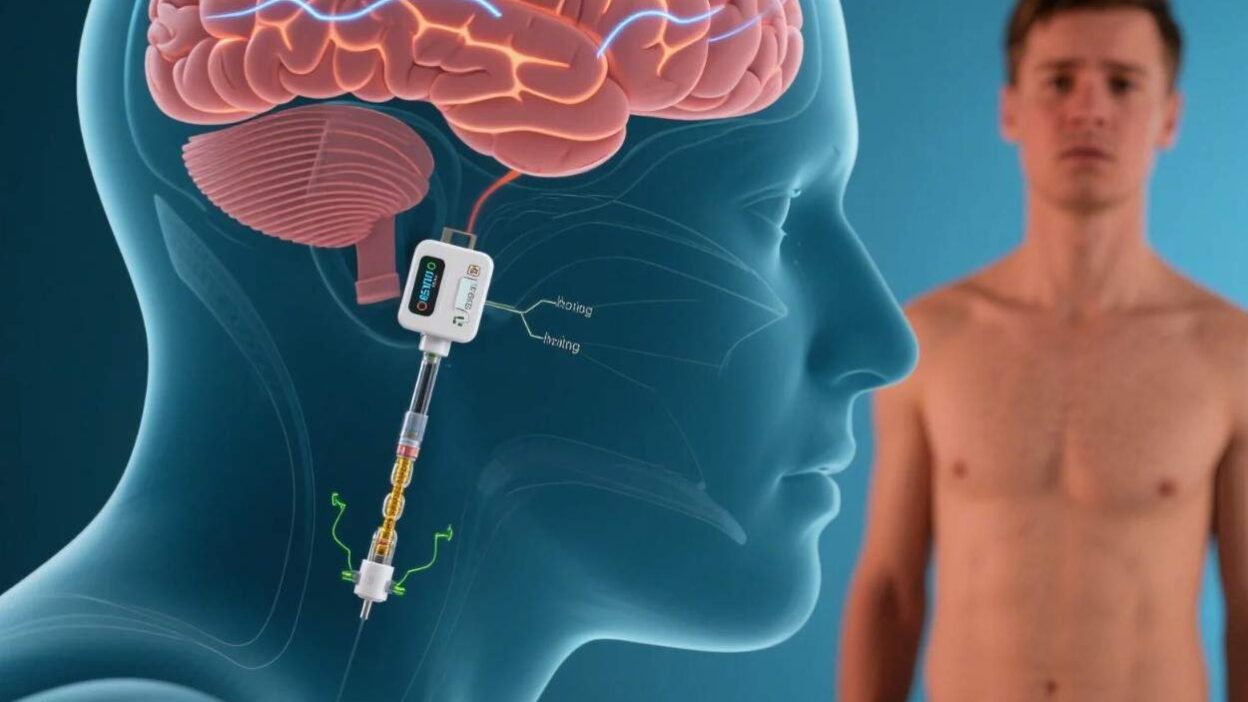Implantable Devices That Detect Stress Hormones and Deliver Calming Electrical Pulses to Reduce Anxiety
Anxiety and stress are silent epidemics. For over 40 million adults in the U.S. alone, the constant hum of worry—tight chests, racing thoughts, sleepless nights—feels like a life sentence. Traditional treatments—antidepressants, therapy, mindfulness—help many, but they’re not universal. What if a tiny, implantable device could stop the spiral before it starts? Enter neuroprosthetics for emotional regulation: a revolutionary fusion of neuroscience and engineering designed to detect stress hormones and deliver instant calm, redefining how we manage anxiety.
The Problem: When Stress Hijacks the Brain
Stress isn’t just a feeling—it’s a biological storm. When we feel threatened (whether by a deadline, a conflict, or even a crowded room), our bodies flood with cortisol, the “stress hormone.” High cortisol levels trigger the brain’s amygdala (the “fear center”), overriding rational thought and pushing us into fight-or-flight mode. Chronic stress can lead to anxiety disorders, depression, and even physical health issues like heart disease.
Current solutions often lag: medications take weeks to work, and therapy requires consistent effort. Neuroprosthetics step in where these fall short, offering real-time, personalized intervention.
How They Work: Detecting Stress, Delivering Calm
Neuroprosthetics for emotional regulation are sleek, coin-sized implants (or sometimes external wearables) that bridge biology and tech. Here’s their magic:
- Stress Detection: Embedded biosensors track cortisol levels in real time by analyzing sweat, blood, or interstitial fluid (fluid around cells). These sensors are so precise they can detect even minor spikes—before you even feel anxious.
- Targeted Electrical Stimulation: When cortisol levels rise, the device fires gentle electrical pulses to specific brain regions. The prefrontal cortex (PFC), responsible for emotional regulation, is the primary target. By activating the PFC, the pulses dampen the amygdala’s hyperactivity, restoring balance between “fight-or-flight” and “calm-and-collected.”
- Personalization via Machine Learning: Over time, the device learns your unique stress patterns—when cortisol spikes, how long it takes to subside, and what triggers (e.g., work emails, social events) set it off. This data refines the pulses, making them more effective with each use.
Why They’re a Game-Changer
- Speed: Unlike medications (which take hours to work), neuroprosthetics deliver relief in minutes. A panic attack that once left you trembling for 30 minutes could be calmed in 5.
- Precision: No more one-size-fits-all solutions. Machine learning tailors pulses to your biology, avoiding the trial-and-error of medications.
- Non-Invasiveness: Many are implanted minimally (under the skin, like a pacemaker) or worn externally, with no major surgery required.
- Proactive, Not Reactive: They don’t just treat symptoms—they prevent anxiety from escalating, helping users regain control before stress spirals.
Current Progress and Challenges
Early trials are promising. In 2023, a pilot study at MIT tested a prototype on 50 participants with generalized anxiety disorder (GAD). Over 80% reported reduced cortisol spikes and improved mood within two weeks. Another study in 2024 used fMRI scans to confirm that the devices strengthened connections between the PFC and amygdala, a key marker of emotional resilience.
Yet, challenges remain:
- Long-Term Safety: How do these devices affect brain tissue over years? Researchers are monitoring for inflammation or scarring.
- Cost and Accessibility: Early models are expensive (20k), limiting access. Advocates push for insurance coverage and subsidized programs.
- Ethical Questions: Could over-reliance on tech reduce coping skills? Experts emphasize it’s a tool, not a replacement for therapy or lifestyle changes.
The Future: Emotional Well-Being, Redefined
Neuroprosthetics aren’t just about “fixing” anxiety—they’re about empowering people to thrive. Imagine a student acing a presentation because their device calmed pre-stage jitters. Or a parent staying present with their child, even after a chaotic day. These devices could transform how we navigate stress, turning “I can’t handle this” into “I’ve got this.”
As research advances, expect smaller, more affordable models and even non-invasive versions (like smart patches). The goal? To make emotional regulation as routine as checking your phone—because everyone deserves to feel calm, confident, and in control.
In a world where stress is inevitable, neuroprosthetics offer something radical: hope. Not just for managing anxiety, but for reclaiming joy, focus, and peace—one pulse at a time.



